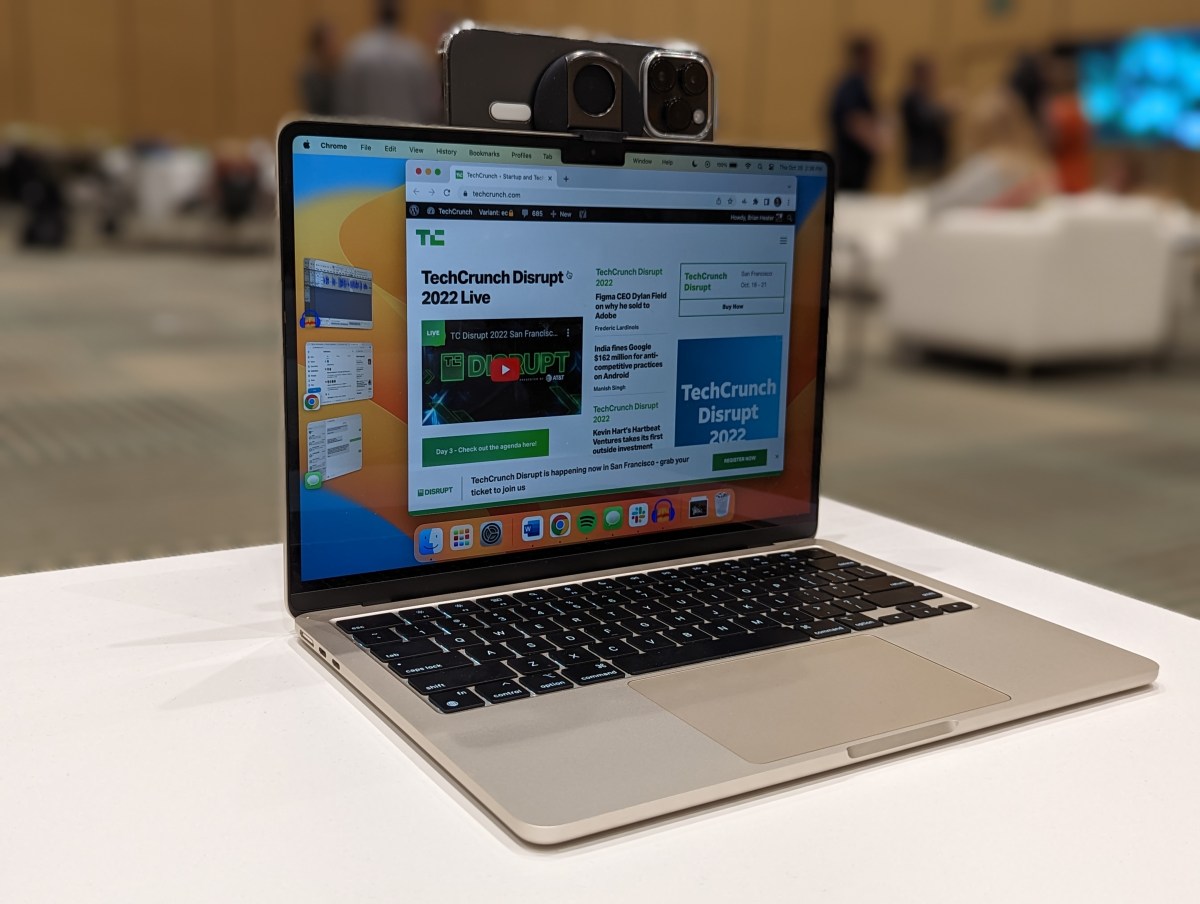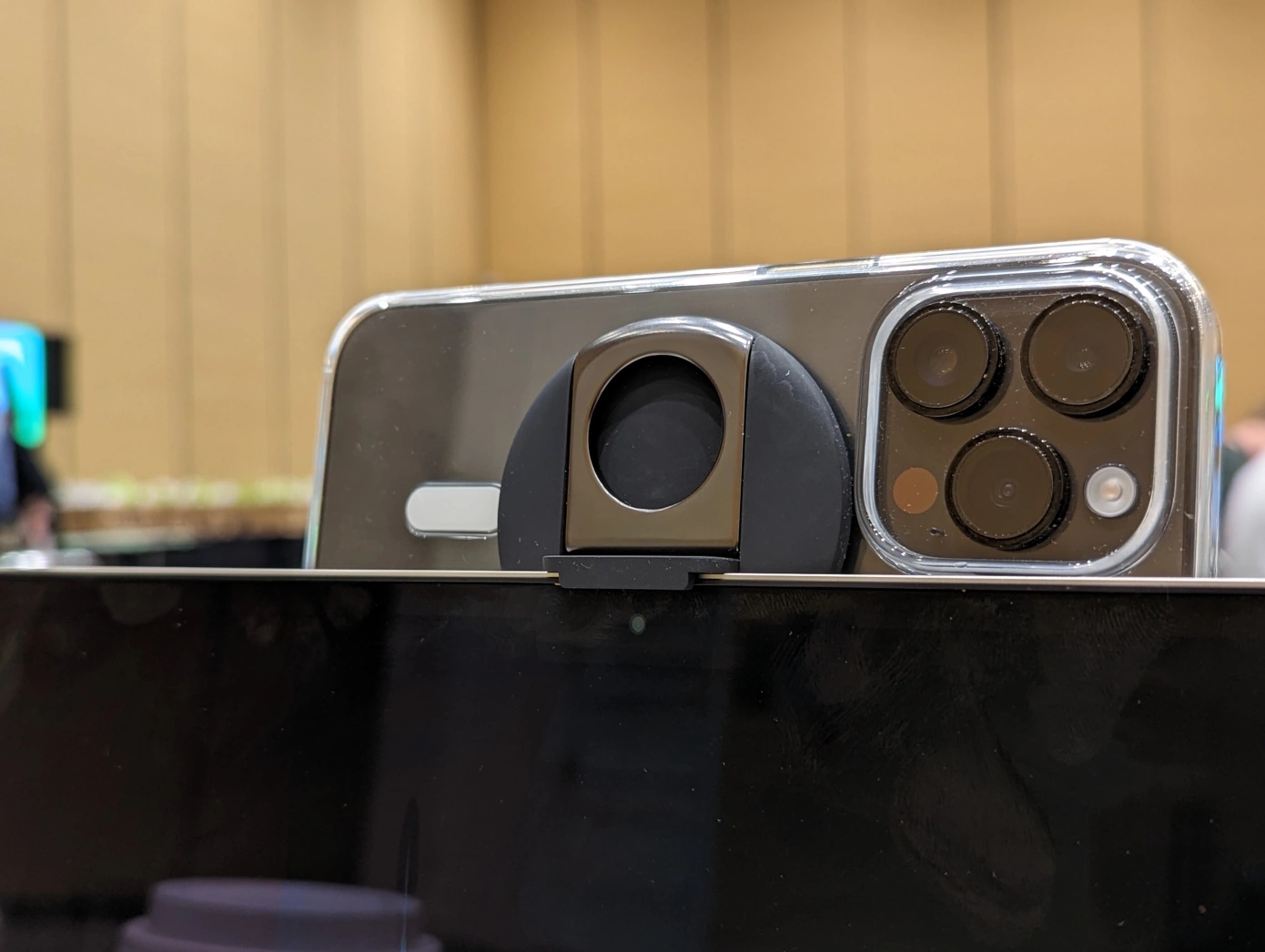
A closer look at macOS Ventura • TechCrunch
Sometimes it’s nice when the product launches when I’m on the go. I stand by that statement because, well, it’s another thing to throw in the ever-busy work trip. But there are some products that are better tested on the go: laptops, headphones, travel chargers, and the occasional operating system.
I’m running a beta version macOS 13 Ventura on my desktop since it was introduced this summer at WWDC. As always, this sort of thing is not for the faint of heart. As I mentioned before, I’ve really come to appreciate Stage Manager on the big screen. I don’t have a great adoption rate for new macOS workflow features—I tend to use most of them during the trial period and then promptly forget they exist.
Stage Manager has gone through the ringer on the iPadOS side — and rightfully so. The implementation of the beta version left much to be desired, which contributed to the fact that the company decided to abandon iPadOS 16 and move to version 16.1 about a month later. I won’t say that Stage Manager was perfect from the start on the desktop (what is beta software anyway?), but I turned it on on day one and have rarely turned it off since.
Image Credits: Brian Heeter
When this feature is enabled, all windows on the desktop will be open at the same time. The main window takes up most of the space, and the rest is collapsed to the side of the screen. It’s a bit like a toolbar made up of open programs. Clicking on any of them will change them to the main space. You can also pull out a few and create a stack that will then shrink and expand together.
Underrated in all of this is the fact that all desktop clutter disappears when this feature is enabled. Meanwhile, if you maximize the window, the sidebar won’t interfere. The feature still has some quirks, I would suggest an update from Apple. For example, when you unzip a window, the Finder window you’re using is returned to the sidebar. Pulling individual windows from the stack can also be a bit annoying. Overall, though, you can make a strong case for Stage Manager as the best Mac productivity update in years. I’m happy to say that I use it on both my desktop and laptop.
Continuity camera was met with mixed reviews when it was unveiled at this year’s WWDC. The criticism is fair in the sense that it feels like putting a Band-Aid on a more serious problem by addressing the symptoms rather than the root cause. The broader problem is that Apple has neglected laptop webcams for years. It’s a problem that has understandably become acute during the pandemic, and Apple has recently been making efforts to improve video capture through a combination of provider settings and hardware improvements.

Image Credits: Brian Heeter
The Continuity Camera was developed as a way to solve a larger problem with existing equipment. Instead of buying an external webcam or a new Mac, it offers a way to use your iPhone as a makeshift webcam of sorts. And let’s be real, iPhone video capture is light years ahead of even the newest Macs. Setup is easy as long as your Mac and iPhone work with the same Apple account. Using an accessory like the one Belkin recently released, you can mount it to the top of your laptop or desktop, right above the built-in webcam. The rear cameras will do the work of the webcam. As far as solutions go, it’s not one of Apple’s most elegant solutions, and as I pointed out in the my Belkin entry, the iPhone 14 Pro is too heavy for the Air cover to support at a 90-degree angle. But the solution absolutely works as a last resort. Going forward, I plan to keep the Belkin nozzle in my cable bag.
In my opinion, these are the two main features. Although, as always, these releases are pretty serious feature dumps with updates all over the place. The spotlight this time is very much loved. This is one of those features that you probably don’t think about. I tend to limit my desktop searches to local files and use Google for everything else.
Apple aims to make the desktop version of Spotlight the kind of one-stop shop that it has become on the iPhone. It certainly makes sense on a mobile device, but at the end of the day, I’m not sure how much more convenient the macOS version is compared to launching a browser and doing a Google search. This time around, the feature offers a more streamlined design, and searches in Photos, Messages, and Notes are at least (hopefully) not things you’ll find in browser search.
The list also includes entertainment searches for things like music and movies. However, I’d say the handiest addition here is the Quick Actions, which offer shortcuts for things like creating alarms and Shazaming music. This should save you some valuable time.
Safari tends to really like these big system updates, and that’s certainly the case with Ventura. This is another place where I have to say I’m not a daily user. I just love Chrome as a browser and a cloud service for syncing accounts. The biggest news here is Shared Tab Groups, which allow you to share groups of tabs. Basically, you create a group around a specific topic and can share them using a variety of methods, including messages and mail.
There’s also a nice security overhaul with the addition of end-to-end login encryption via passkeys. Consider what Google offers with Password Manager. The company has also extended the feature to non-Apple devices.

Image Credits: Brian Heeter
This time the Message has some really welcome additions. You can now unsend the last message or edit it. In the latter case, the message will open as a dialog box in which you can enter text directly. However, keep in mind that the program maintains a paper trail thanks to user feedback. After editing, the message has an “Edited” tag. Clicking on this will open the edit history.
SharePlay is now available in Messages, so users can watch movies or listen to music together. Additional collaboration tools let you share notes, reminders, and more through the app. The Photos app also gets a bunch of new sharing options, including a collaboration tool that lets you add a group of up to five people.
System settings have received a new — more similar to iOS — design. The redesign definitely simplifies the process. The learning curve is minimal once you’ve spent time on the iPhone. Closing the gap between macOS and iOS continues unabated.
One last important thing to mention is Freeform. Apple’s attempt to crack the frustrating world of virtual whiteboards has yet to launch. The company continues to promise an arrival later this year. More on this closer to launch.
In the meantime, Ventura is available as a free download for Macs manufactured in 2017 and later.


